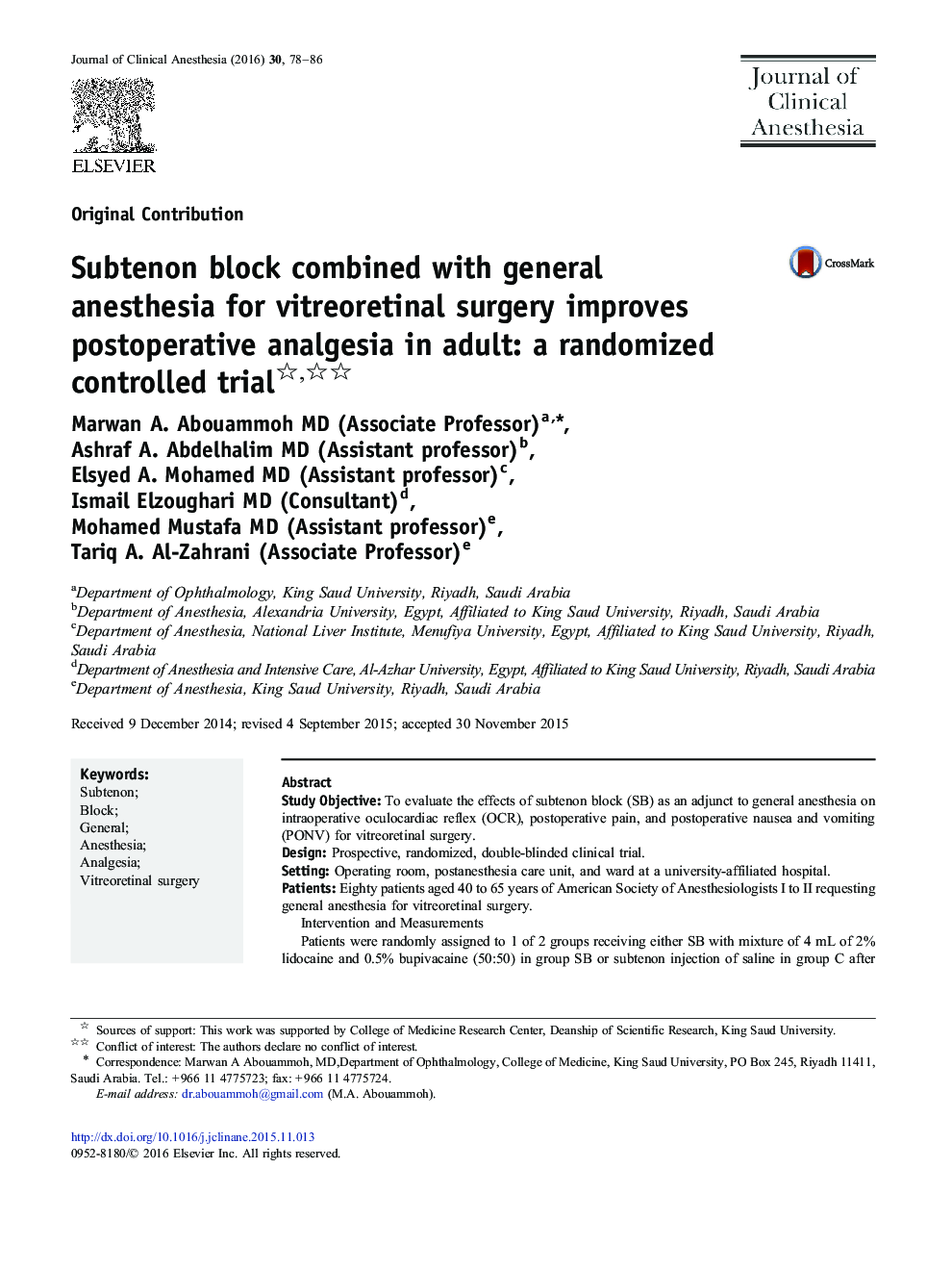| Article ID | Journal | Published Year | Pages | File Type |
|---|---|---|---|---|
| 5884911 | Journal of Clinical Anesthesia | 2016 | 9 Pages |
â¢To study the effect of subtenon blocks as a general anesthesia adjunct in the setting of retinal surgeries.â¢The need for rescue analgesics is significantly less in patients receiving a subtenon block.â¢Need for rescue antiemetic therapy was significantly less in subtenon block group.â¢Subtenon block lowered the incidence of oculocardiac reflex intraoperatively.
Study ObjectiveTo evaluate the effects of subtenon block (SB) as an adjunct to general anesthesia on intraoperative oculocardiac reflex (OCR), postoperative pain, and postoperative nausea and vomiting (PONV) for vitreoretinal surgery.DesignProspective, randomized, double-blinded clinical trial.SettingOperating room, postanesthesia care unit, and ward at a university-affiliated hospital.PatientsEighty patients aged 40 to 65 years of American Society of Anesthesiologists I to II requesting general anesthesia for vitreoretinal surgery.Intervention and MeasurementsPatients were randomly assigned to 1 of 2 groups receiving either SB with mixture of 4 mL of 2% lidocaine and 0.5% bupivacaine (50:50) in group SB or subtenon injection of saline in group C after induction of anesthesia and before surgery in a double-blind manner. The time to first postoperative analgesic dose, incidence of intraoperative OCR, postoperative pain scores, perioperative analgesic requirements, number of patients requiring rescue analgesics during the 24-hour study period, incidence of PONV, and possible complications were recorded.ResultsTime to first postoperative analgesia was significantly longer in group SB (P= .002). Pain scores at the first 6 hours postoperatively were significantly lower in group SB (P= .002). Intraoperative and postoperative analgesic requirements were significantly reduced in group SB (P= .015). The incidence of OCR and PONV also significantly decreased in this group (P= .001 and P= .011, respectively).ConclusionUse of SB combined with general anesthesia in patients undergoing vitreoretinal surgery reduces postoperative analgesic requirements and complications such as intraoperative OCR and PONV.
